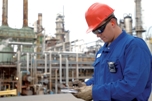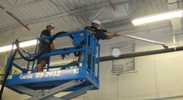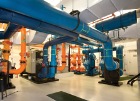
By Candace Adrian
After arming a worker with a gas detector, how do you know the instrument is working as it should? How do you know whether the worker is using it at all?
By Shawn M. Galloway
Consider mapping how safety communication flows within your organization.

By Paul R. Miller
A seemingly harmless particle raises explosive issues.
By Travis Rhoden
OSHA encourages employees to use NIOSH-approved respirators for voluntary use, but this is not specifically required.
By Mark Saner
Learn whether FR is right for your company and, if so, how to comply with industry standards.
By Stefanie Williams
Looking at the real challenges the company is facing or could face in the future enables accurate gap analysis and development of a plan of action.
By Ronnie Rittenberry
Innovation, integration, inspiration--and wood dust--will be in the spotlight this month at the 72nd American Industrial Hygiene Conference & Exposition.
By Barry R. Weissman
Try out these methods to make your hazard communication training fun and informative for employees.
By Kami Blake, Erin McVeigh
Now is the time to digest the full complement of new rules, evaluate the impact to organizational reporting, determine whether gaps exist in expertise or capabilities, and understand what options exist to fill those gaps.

By Kimberly Fletcher
Gas monitoring for the entire system is critical, not only for compliance reasons, but also for protecting your people and operation.
By Jerry Laws
2010 was the safest year in the history of U.S. freight railroading.
By Robert Pater
Trying to go it alone can show limited results. Make it easy for others to help you.